The Ecorefine
One of the most alarming causes for concern in the world today is the significant increase in hazardous, harmful waste and its mixture. The Ecorefine technology has a solution to this conflict; it is able to recycle 99.995% of all organic waste. It is applicable in many areas and is characterised, among other things, by its ability to clean oil waste. Whether from an oil field contaminated with oil sludge, in an oil tanker thick covered with oil deposits or an oil slick from a disaster at sea: Through a specially developed refining process, these contaminants are purified to almost 100% profitability. In the case of an oil sludge, the oil is refined into diesel and the soil that has been contaminated with additives can be beneficially used as a base material in other industries.

Similarly remarkable achievements are found in many other dangerous and safe waste deposits including:
-
Medical Waste
-
Chemical Waste
-
Food Waste
-
Contaminated Soil
-
Grinding Sludge
-
Organic Waste
-
Green Cuttings
-
Water Desalinisation
The first invention of Norbert Stegmann:
The ECOREFINE, 1994
The advantages for our environment and the financial benefits are obvious. The application possibilities are almost unlimited. There is no doubt that Ecorefine technology is the greatest advance in recycling technology, also due to its continuous mode of operation.
The Ecorefine Technology was completed in 1994 - an innovative procedure for purifying soil, which is contaminated by pollutants or mixed with other materials (e.g. mill scale sludge) in "on-site operation”. This purpose-built system can be operated mobile and stationary. This procedure is based on vacuum evaporation, which allows time-saving, quick decontamination without using any additives. Through inlet sluices the contaminated material is continuously brought into an evacuated container and heated up during passage. The moist parts (water and several carbohydrate compounds) evaporate during this process. These fumes are sucked off the container, separated from dust particles, and then condensed. The purified material leaves the container through outlet sluices.
Most of the solid and liquid final products gained this way can be recycled. Soil can be reused for agricultural purposes after being mixed with water and bacteria. Metallic powder gained from grinding sludge can be added to blast-furnace processing; most of the separated carbohydrates (oils) can be reprocessed.
Sterilizing - is the cleanest solution. Subsequent sterilization destroys bacteria's, fungicide, prions etc. This unrecognizable and sterile waste can be disposed of as household waste without any problems or be sent to recycling plants.
The Ecorefine - the Solution to many Environmental Problems
Find out more...
Blue Sewage System
The cleanest, most environmental friendly, safest and at the same time most cost-effective solution in the purification of sewage/sewage sludge.
Based on the phenomenal Ecorefine system, Blue Sewage is the most advanced and 100% environmental friendly sewage system available on the market. Like most of the techniques and technologies in the Blue Building Concept, Blue Sewage is adaptable and can therefore be used in a single house or in an entire city.
The Blue Sewage is not only economically outstanding; it is also super energy efficient, odourless and, above all, non-polluting. The Blue Sewage System recycles almost all household waste. It produces clean water for garden irrigation, organic waste is recycled into fertiliser. For a single house, this can be used in the garden as a highly effective source of nutrients; for a city, the treated solid waste can be pelletised and sold as high-quality fertiliser.
Costs turn into profit.
Blue Sewage is synonymous with efficiency: this system is energy-efficient, odourless and, above all, environmentally friendly thanks to the lowest possible exhaust emissions.
The Blue Sewage treatment is characterised as follows:
.…... recycling on the same day
.…... greening landscape and the city
.…... saving 50% energy
.…... up to 80% water for irrigation
.…... small space requirement
.…... no smelling
.…... no pollution
.…... outstanding results
The addition of a specially developed mineral fertiliser (powder) and water to the cleaned organic waste dried by ECOREFINE results in a transformation into compost or humus. The nutrients contained in the mineral fertiliser, add natural bacteria to start the process of biological activation. Food leftovers, green waste, fish waste, sewage sludge, etc. are converted into high-quality fertiliser.
Adding fertilisers to the cleaned organic waste replaces everything that the plants have extracted from the soil, with the exception of humus. Humus, however, is the only guarantee of healthy growth, freedom from pollutants and lasting fertility. The method described above can be used to turn a desert into arable land and at the same time reduce food waste (from hotels, restaurants, private individuals), green waste, etc.




Conclusion:
Incineration is no longer acceptable due to high pollution by emissions and contaminated ash. The thermal procedure has certainly a large range of application but compared to the ECOREFINE it requires approximately the triple power supply. Additionally the great expenditure for the purification of the flue gas causes far higher costs.
The biological treatment appears to be the more profitable one, but at least there is still rest sewage sludge. That is why environmental offices in some countries already ban the dumping of rest sewage sludge on landfill; alternative, environmentally safe technologies are in demand.
- Safe and environmentally friendly dispose of infectious sewage sludge.
- Disinfection for germs & bacteria.
- The safest way for prion elimantion.
Guaranteed sterilization of infectious rest sewage sludge can only be achieved by taking place prior to thermal vacuum treatment, a part of the Blue Sewage system. Liquids contained in the waste are not a problem for the purifying process, not one germ survives. Due to its compact modular design, the ECOREFINE System has a throughput rate from 300 kg up to far more than 1000 kg per hour.

The Ecorefine
Purification of Contaminated Soils
The ECOREFINE technology is a process for purifying soils contaminated with pollutants or other materials (e.g. mill scale sludge) in ‘on-site operation’. This purpose-built system can be operated both mobile and stationary.
The new procedure is founded on vacuum evaporation and enables time-saving and rapid decontamination without the use of any additives. The contaminated material is continuously fed into a vacuum container via inlet sluices and heated as it passes through.
The moist components (water and various carbohydrate compounds) evaporate in the process. These vapours are extracted from the container, separated from dragged dust particles and then condensed. The purified material leaves the container through outlet sluices.
Most of the solid and liquid end products obtained in this way can be recycled. Soil can be reused for agricultural purposes after being mixed with water and bacteria. The metal powder obtained from the grinding sludge can be fed into blast furnace treatment; most of the separated carbohydrates (oils) can be further processed. Already in 1994, this process has already been realized in a pilot plant and tested for its functionality in numerous trials. Continuous investigations by TÜV Thüringen and other institutions have shown that maximum cleaning results are achieved with this process.

ECOREFINE FOR SLUDGE
Capacity: 50 tons/hour
ECOREFINE – Description
Once the contaminated oil sludge has been inserted into the plant, a vacuum is created in the double sluiced chamber-off system. Through a further sluice, the material falls onto compressed air controlled plate vibrators. The vacuum and heat during this process cause the hydrocarbons to gasify, whereby dirt particles in the oil are filtered out through a dust separator. After cooling the substances down, oil and sand are being separated. The machinery and procedures for this process have been industrial approved.
The system entails the following, especially for this process developed components:
- Process valve
- Exhaust
- Vacuum pump
- Cyclone separators
- Condenser
- Cooling System
- Double chamber system
The system consists of several closed, externally insulated vessels that are equipped with appropriate interior conveyors, such as paddle mixers and screw conveyors. The individual containers are directly connected to each other by means of suitable support mechanisms and an intervening double sluice chamber system.
The interconnected vessels of the system have an inlet and an outlet double sluice chamber system. The vessels are equipped with heating and heatable exhaust systems. In addition, the system has vacuum generators, suitable separators, condensation systems and, if necessary, a power supply system.
From the hopper, the contaminated material enters into an inlet double-lock chamber system. As soon as the level indicator has registered the exact inflow, the central system closes the upper sluice. A vacuum is generated in the sluice system which, in conjunction with the vacuum in the tank, maintains the correct flow rate. The lower sluice opens and oil sludge falls into the tank to be transported by paddle mixers or screw conveyors.
Likewise, devices for droplet separation from gases and for the separation of liquids can be obtained. A heated dust separator is located between the vessels and the respective condensation units. An emission condenser with a suitable filtration device is installed behind the vacuum generation units. In addition, the plant has rotary vacuum feedthroughs that can withstand temperatures of up to 350°C.
The plant is equipped with a programmable logic controller (PLC) that is connected to sensors in the overall system. The liquid in the oil sludge is gradually evaporated. An operating pressure (pressure level) and an operating temperature (temperature level) can be adjusted in each tank (4 tanks in total), which are located between the double sluice chamber system.
The purified oil leaves the vessel system through the double sluice chamber system. The steam and gaseous substances are discharged, cleaned (dedusted) in the separators and liquefied in the condensers. The exhaust steam condenser with its filter behind the vacuum generation unit ensures almost emission-free operation. The separated particles from the gas and the separated liquid are discharged from the vacuum by appropriate devices and collected in a vessel. Depending on the quality and processing, they can be returned to the process stream.
The entire system will consist of 4 large tanks, each with 2 double sluice chambers. In the current process, the viscosity of the oil sludge changes from vessel to vessel. The two end products are sand with a dryness level of 99.9% and the 100% purified crude oil.
A separate area within the plant is designated for processing the purified materials, using technologies and equipment such as a gas chromatograph.

The ECOREFINE system works extremely efficiently and can clean up to 100,000 kg of contaminated material per hour, while the closed system guarantees clean and silent operation. The process produces very low pollutant emissions, with levels well below regulatory limits (a fraction of the amount of pollutants emitted by an average modern car).
The ECOREFINE is suitable for the treatment of contaminated industrial material such as grinding sludge, mill scale sludge, sludge from oil production and processing, and contaminated construction waste. PREUSSAG's cleaning of mill scale sludge showed excellent results. Mill scale sludge is an oil-contaminated waste product from steel processing. After separation of oil and water, the dry substance can be immediately reused as a raw material for sintering processes, resulting in considerable economic advantages.
TÜV Thuringia has certified and confirmed the functionality of ECOREFINE: "The results confirmed the applicability of the process in principle for the decontamination of the soil samples at hand. A purification rate of up to 99.3% was determined. Further advantages of ECOREFINE are its mobility and thus its diverse application possibilities, as could be demonstrated. The on-site cleaning avoids long transport routes of contaminated material. The ECOREFINE will occupy an important position in the existing market, both technologically and economically.

Before Ecorefine: Tetrachloroethylene 52,200.00 µg / kg
After Ecorefine: Tetrachloroethylene 11.30 µg / kg
Purification in %: 99.98
Operational Possibilities on the Market
The ECOREFINE is able to vaporise substances* from contaminated material. These often found substances are listed in the following:
- Mineral hydrocarbons (MHC), e. g. crude oil, heating oil, diesel, petrol etc.
- Benzene, toluene, ethyl benzene, xylene (BTEX)
- Polycyclic aromatic hydrocarbons (PAHC)
- Halogenated hydrocarbons (HHC)
- Phenols
- Cyanide
- Heavy metals in volatile compounds
* The substance to be separated from the material has to reach a vapour pressure of at least 1 millibar at a maximum temperature of 300°C.
The quality of the purified products according to the legal regulations is warranted by continuous laboratory tests. The outstanding results and advantages of this decontamination procedure are absolutely innovative in comparison with conventional methods. Finally, the convincing aspects of the ECOREFINE can be summarized as follows:
- high purification results (certified test results)
- high throughput
- mobile and stationary plant
- high flexibility
- efficient and economic operation
- no additives required for the process
- clean and ecologically beneficial process
- cost reductions (no expenses for transport and storage)
- reusable final products
- reduction of disposal expenses
The Ecorefine
Recycling of Household Waste
Composition of conventional household waste
The composition of municipal waste varies greatly from country to country and changes significantly with time.
In countries which have a developed recycling culture, the waste stream consists mainly of intractable wastes such as plastic film, and non-recyclable packaging.
In developed countries without significant recycling it predominantly includes food wastes, yard wastes, containers and product packaging, and other miscellaneous wastes from residential, commercial, institutional, and industrial sources. Most definitions of municipal solid waste do not include industrial wastes, agricultural wastes, medical waste, radioactive waste or sewage sludge.
Solid Waste Elements
The municipal solid waste has four components: recycling, composting, land filling and incineration. The primary steps are generation, collection, sorting and separation, transfer, and disposal. Activities in which materials are identified as no longer being of value and are either thrown out or gathered together for disposal.
Separation and processing and transformation of solid wastes
The types of means and facilities that are now used for the recovery of waste materials that have been separated at the source include curb side collection, drop off and buy back centres. The separation and processing of wastes that have been separated at the source and the separation of commingled wastes usually occur at a materials recovery facility, transfer stations, combustion facilities and disposal sites.
All Organic Waste
Via a system of conveyors and sluices, materials such as
household waste
sewage
green cutting
food waste
fish waste
organic waste
are conveyed into the ECOREFINE. After entering the ECOREFINE, the material is heated up permanently, machine cut, moved, and mixed.
In the second step the material will be separated in solid and liquid parts, therefore only one chamber system is needed. It is one of the big advantages of the ECOREFINE, that, in contrast to the conventional treatment methods, the soil is only heated up and not combusted. Depending on the kind and composition of the pollutants, most of the hydrocarbons can be supplied to the industry and recycled. Due to the combined action of vacuum, thermal energy and mechanical circulation of the material to be purified, the pollutants get evaporated at low temperatures.

Household Waste - before Ecorefine Treatment

Fish Waste - before Ecorefine Treatment
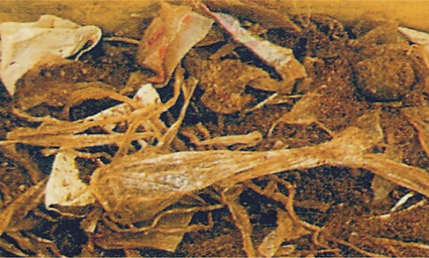
Household Waste - after Ecorefine Treatment
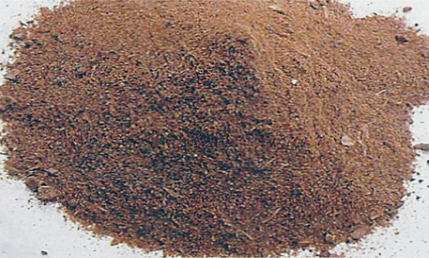
Fish Waste - after Ecorefine Treatment
The near future: Recycling within 24 hours
Transfer and Transport
This element involves two main steps. First, the waste is transferred from a smaller collection vehicle to larger transport equipment. The waste is then transported, usually over long distances, to a processing or disposal site.
Disposal
Today, the disposal of wastes by land filling or land spreading is the usual method to make invisible all solid wastes, whether they are residential wastes collected and transported directly to a landfill site, residual materials from materials recovery facilities (MRFs), residue from the combustion of solid waste, compost, or other substances from various solid waste processing facilities. This kind of waste management bears a high risk, creating nuisances or hazards to public health or safety, such as the breeding of insects and the contamination of ground water.
Energy generation
Municipal solid waste can be used to generate energy. Several technologies have been developed that make the processing of MSW for energy generation cleaner and more economical than ever before, including landfill gas capture, combustion, gasification, and plasma arc gasification. While older waste incineration plants emitted high levels of pollutants, recent regulatory changes and new technologies have significantly reduced this concern.

Mixed Household Waste

Plastic Waste

Aluminium

Organic Waste
ECOREFINE for Medical Waste
Safe and environmentally friendly disposal of infectious waste while still cost saving.
Increasing numbers of infectious waste produced by health care, the rapid increase of the world population, diseases like SARS, bird flu, BSE and natural disasters – a development, which confronts ever more complex tasks to the waste disposal industry. The most sensible treatment of biologically contaminated materials consists in converting them into household refuse or recycling in a manner that ensures elimination of pathogen.
Incineration of medical waste is increasingly becoming criticized because of:
– high levels of dioxin and furane in the exhaust emissions
– contamination of resultant ash by heavy metals
– high costs for flue gas decontamination plants
Due to the high proportion of synthetic materials, the biological problem turns into a chemical problem during incineration. Result: Incineration is no longer acceptable due to high pollution by emissions and contaminated ash. That is why environmental offices in some countries already ban the incineration of medical waste – hence, alternative, environmentally safe technologies are in demand.

Sterilization Plant for
treatment of biologically contaminated materials


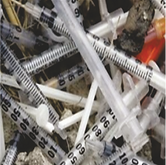


The cleanest, most environmentally friendly, safest and at the same time most cost-effective solution is the sterilization of medical waste.
Benefits of the ECOREFINE-Technology:
- no polluting emissions
- no pollution of waste water
- no chemical additives during sterilization
- only electricity or gas and water as sources of energy
- no additional costs for transport of dangerous goods
- safe compliance with legal regulations
Whether in solids or liquids – not one germ survives.
Guaranteed sterilization of infectious waste can only be achieved by defined size reduction taking place prior to thermal treatment. The special shredder from ECOREFINE produces an optimal, homogeneous base material for guaranteed sterilization.
Liquids contained in the waste? No problem.
Liquids contained in the waste can be filtered and purified. Depening on the nature of the liquid, reselling is an additional option.
Together with the solid materials, the ECOREFINE system pumps the liquids into the sterilisation chamber. Rapid heating is ensured by the efficient steam generator.
Alternating steam pressure phases prevent air traps and ensure a homogeneous and fast heat transfer. Sterilisation takes place under optimal saturated steam conditions. The unique stirring device in the sterilisation chamber ensures extremely intensive steam penetration. Unpleasant emissions are reduced by an integrated odour filter system with a combination of activated carbon and mineral filter elements. Due to its compact modular design, the ECOREFINE system has a throughput capacity of 300 kg up to well over 1000 kg per hour.

With the ECOREFINE, all medical waste could be recycled in the future within 24 hours.
The Ecorefine
The Blue Building Recycling Centre
The recycling hall “Blue Building Technology Centre” is another planned project of the Blue Building Environmental Organisation.
Wherever it will be placed, it will be the landmark of the Region. Our Blue Building Technology Centre contains the best existing and steady environment technologies from The-Environmentalist and our German partners, with many years of experience.
With our in-house laboratory, new technologies appearing on the market or even existing products can be analysed and certified with the “Blue Building Environmental Organisation Certificate”, as a sign for outstanding quality and environmental friendliness. Instead of spending quite a lot of money for economic and technical expertise, which finally just reflect the opinion of the client, our Blue Building Technology Centre earns a profit, with a return of investment after 30 months.
The building will be characterised by a modern and transparent architecture; a pure steel structure with reinforced concrete floors, has a roof as curved waves, consisting of ribbed sheets with thermal insulation and PVC sealing layer. The external walls are steel-glass facades with external solar protection. The interior walls are made of light insulating blocks. The wide overhanging roof slab is supported on steel columns similar to a tree and protects the shipping zone. The building consists of three floors, two of which are underground. The second basement level holds a water tank and service areas. On the first basement level, waste is processed, carried to the first floor and disposed of as compost.
A cafeteria open to the public will provide the visitor with an insight into the cleaning process and demonstrate the odourless recycling process.

Water Purification:
Portable water of superior quality will be provided without using chemicals.
Sewage Plant:
Up to 60 m³ of liquid sewage can be treated; sufficient for approx 1,000 people (incl. Cafeteria)
Ecorefine Technology for:
-
Green cutting
-
Food waste
-
Fish waste
-
Oil
-
Sterilization of waste Free of Pollution
-
Processing and reutilizing household waste and similar garbage
-
Special fertilizers for forests and green spaces, water-saving irrigation systems and the output of waste processing

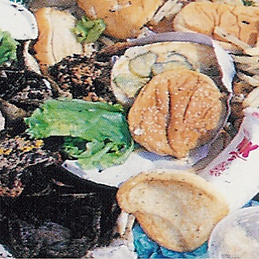


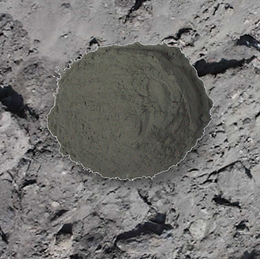

Composting:
Municipal, commercial, agricultural, private organic waste, green cuttings and bark.
Contaminated Sites:
Microbiological soil and surface decontamination of biological waste treatment plants of residual waste. Revitalisation and regeneration of subducted, (Ecorefine) cleaned, decontaminated soils and substrates, sewage sludge, manure.
Composting of areas:
Agriculture, gardening, private garden, fruit growing, cultivated pasture.
Livestock:
Deep litter, droppings, manure, horse stables, small scale farming, and poultry- farming.
Landscaping:
Lawns, golf courses, parks, nature reserves, water protection areas.
Humus blocks:
Saving up to 80 % irrigation water, Water absorbency 800-1200 ml/100 g, minimum dry organic matter content 95%, water content 40-50%, volume weight of the humus blocks: 100-200 kg/cbm
